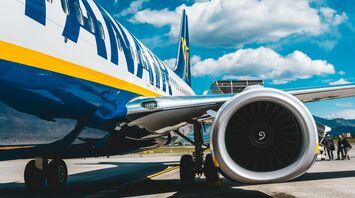British AAIB Investigating Ryanair High-Speed Nose-Down Go-Round at London Stansted

The United Kingdom Air Accidents Investigation Branch (AAIB) has launched an investigation into an incident involving a high-speed, nose-down pitch attitude during a go-around by a Ryanair Boeing 737 MAX 8-200 at London Stansted Airport. The incident, which occurred on December 4, 2023, involved a Ryanair flight operating from Klagenfurt Airport (KLU) to London Stansted Airport (STN).
During its approach at STN, the flight crew initiated a go-around. At 11:03 local time, the aircraft began descending to an initial altitude of 2,300 feet. However, as it climbed to 4,425 feet, it suddenly lost altitude, descending to 2,450 feet within seconds, while its ground speed peaked at 277 knots. The aircraft later stabilized at 3,000 feet and successfully landed at STN at 11:14.
Following the incident, the aircraft was taken out of service for two days. It resumed operations on December 6, flying from STN to Palanga Airport (PLQ), followed by four flights to and from Ireland, landing at Dublin Airport (DUB) and Knock Ireland West Airport (NOC).
The cause of the high nose-down attitude during the go-around remains unclear. While previous incidents involving the Boeing 737 MAX 8 have highlighted issues with the Maneuvering Characteristics Augmentation System (MCAS), other factors such as weather conditions at STN, including light rain and variable winds, could have contributed to the event. The METAR report indicated wind speeds of up to 9 knots, with directions varying between 090 and 150 degrees.
MCAS was designed to enhance pitch stability, ensuring the aircraft handled like previous 737 models. It activates under specific conditions: manual flight control, flaps up, and an elevated angle of attack (AoA). Post-accident modifications to MCAS now require data from both AoA sensors and limit the system's commands, ensuring pilots can always override it.
The AAIB's investigation will focus on determining the exact cause of the incident and whether any system malfunctions, including possible MCAS activation, contributed to the high-speed nose-down pitch attitude.



















